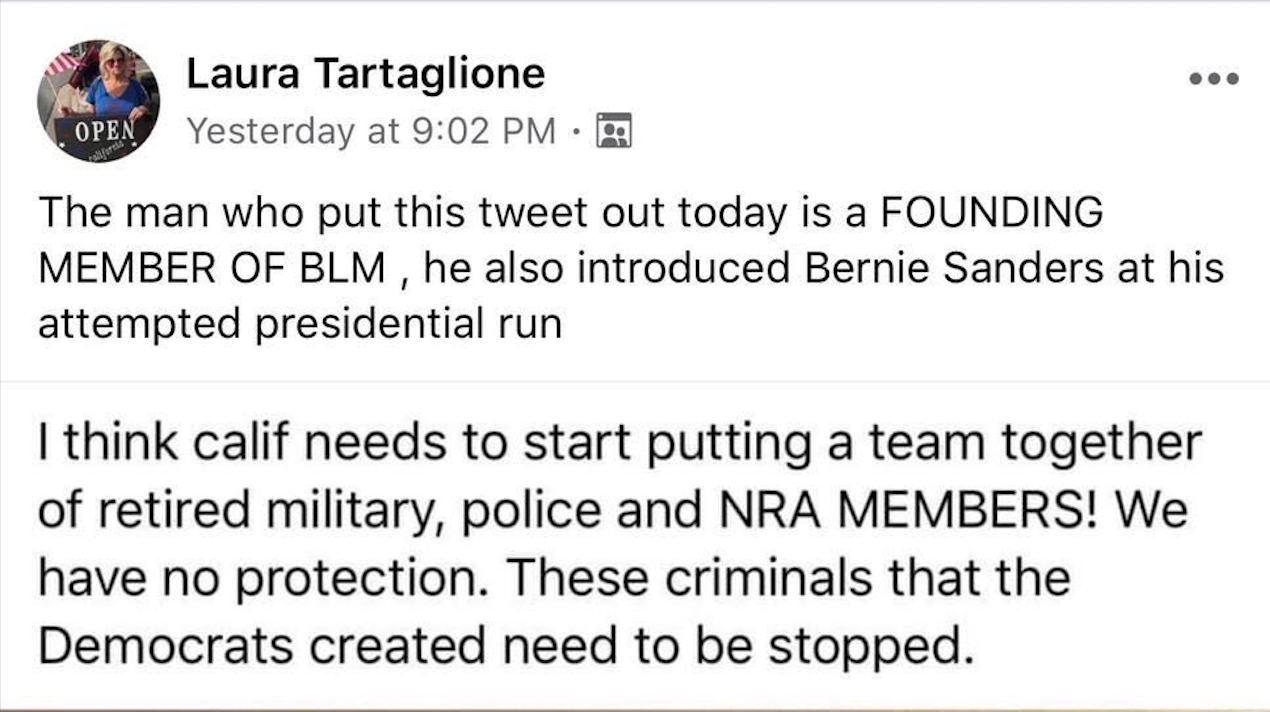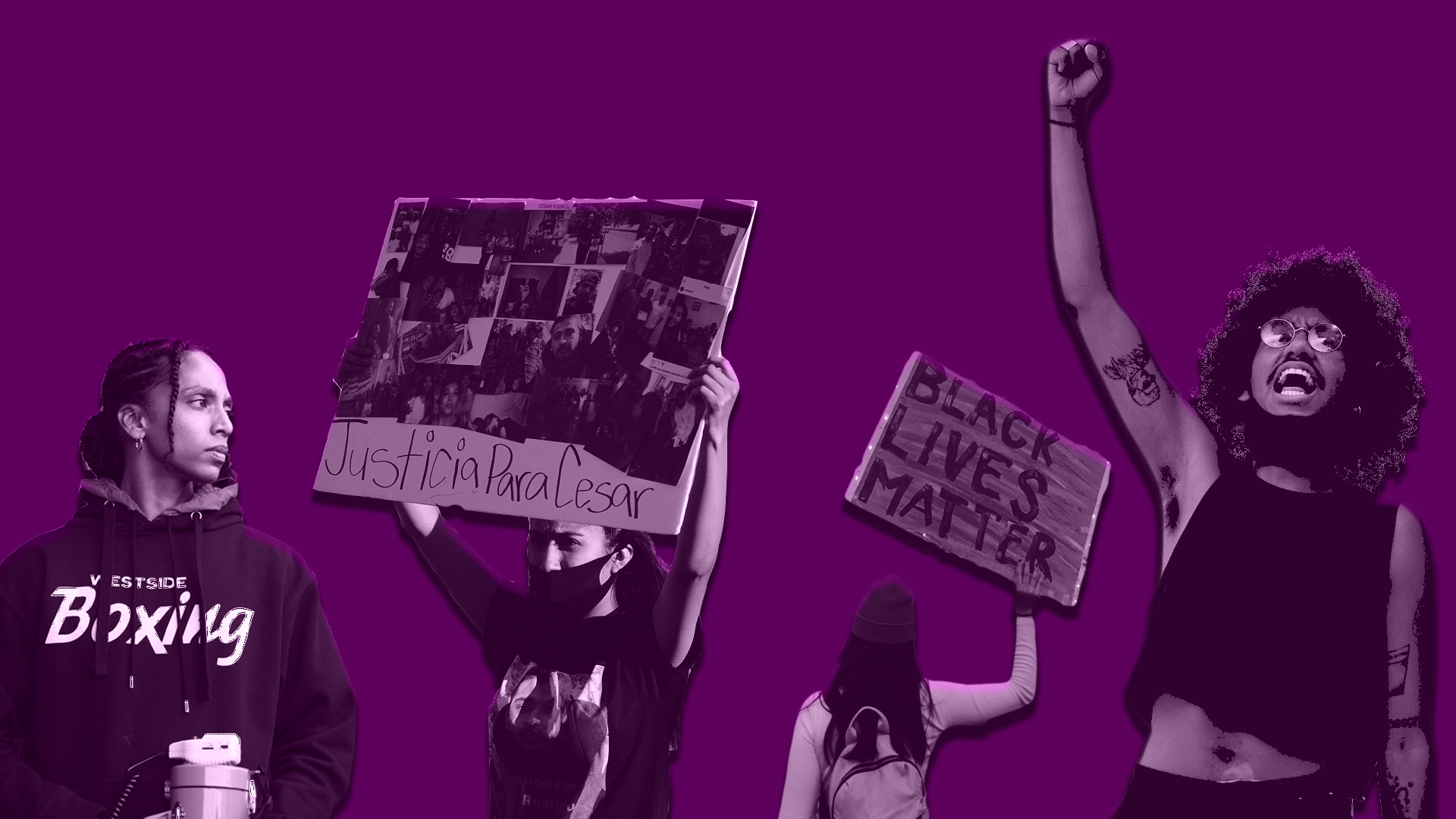Three Months Since the Long Beach Anti-Police Brutality Uprising: What Have We Learned?
15 minute readToday marks the three-month anniversary of the May 31 uprising in Long Beach that demanded police be defunded and held more accountable in the wake of George Floyd’s death in Minneapolis.
In the 93 days since then, a lot has happened both locally and nationally.
Yet another viral incidence of life-destroying police brutality against a Black person in Kenosha, Washington has sparked outrage and renewed protests across the country. Jacob Blake was shot several times in the back by police while entering his car, where his three young children were seated, leaving him paralyzed from the waist down.
At home, the summer of protests has seen over a hundred actions calling for local lawmakers to rein in the Long Beach Police Department.
The latest was on Saturday, when protesters gathered to commemorate the three-year anniversary of Cesar Rodriguez’s death. Rodriguez died in 2017 after being hit by a Metro Blue Line train during a struggle with Long Beach police that stemmed from a fare evasion stop.
Earlier this month, the Los Angeles County District Attorney’s office cleared Officer Martin Ron of any criminal wrongdoing in the case.
About a hundred protesters gathered outside the LBPD station downtown and listened to members of Rodriguez’ family demand that Ron be held accountable.
“Instead of de-escalating the situation, they (the police) escalate the situation. They (the police) murdered my brother for $1.75,” said Rodriguez’ sister Elevia Granados to the crowd.
Protesters then marched nearly four miles to the Wardlow Metro Station where Rodriguez died.
And the protests are set to continue: Another demonstration demanding police be defunded with those funds reallocated to community resources is planned for Sept. 8 at Recreation Park.
City officials have responded to these demands by proposing a modest 5.2% cut to the police department’s budget for the next fiscal year. Though according to City Manager Tom Modica, much of that accounts for “cost growth increases,” without which the cut actually pencils out to 1.6%.
The city is also undertaking a Framework for Reconciliation process to “to reconcile a gap in the experiences of impacted and vulnerable people with current City policies, especially the Black community.” However Black Lives Matter co-founder Dawn Modkins recently said the process of pushing the city toward a more equitable horizon has so far has been “extremely frustrating.”
Also, in the last three months, a deluge of reporting has revealed a multitude of dysfunctional aspects of the police department’s operations, culture, and oversight. We summarize it below.
POLICE VIOLENCE AT AN ANTI-POLICE VIOLENCE PROTEST
The day of the May 31 uprising over 5,000 people converged on downtown Long Beach. Police declared unlawful gatherings in various parts of the city as early as 4:45 p.m. They then fired less-lethal rounds to disperse crowds, which were largely peaceful, though police said bottles and other items had been flung at officers.
The police’s use of force resulted in numerous injuries, some of which were gruesome. Part of a woman’s finger was shot off. She has since filed a claim against the city for damages. A public radio reporter was injured in the throat by a less-lethal projectile and an emergency room doctor was hit in the wrist.
While KPCC reporter Adolfo Guzman-Lopez said that an officer “aimed and shot me in the throat,” LBPD Chief Robert Luna later said Guzman-Lopez was “inadvertently hit with a round that ricocheted either off something or somebody.”
Meanwhile, a controversial photo from that day appearing to show an officer pointing a less-lethal munition launcher at a child was published and went viral.
The Long Beach Police Officers Association argued that the photo was misleading. Nonetheless, for some the image became symbolic of the police’s attitude toward the public.
Luna would go on to say that the boy’s father should be arrested for child endangerment, triggering even more backlash from the community, with former City Council candidate Eduardo Lara calling for the chief to be fired over the comments.
By the evening of May 31, looting had begun to break out in various parts of the city. The police department’s response would later draw criticism from local officials and business owners.
OFFICER FIRED FOR POSTING INAPPROPRIATE PHOTO
That night, an LBPD officer posted a disturbing image to his social media showing his baton with a blood-splattered sidewalk in the background. After the local press reported about the photo, an investigation was launched by the police department and the officer, Jacob Delgado, was swiftly sacked.
Even so, the incident left a bad taste in the mouth of some community members.
DEATH THREATS AGAINST SHAUN KING ON SOCIAL MEDIA
Less than a month later, the LBPD again made national headlines when retired officers were caught making death threats on social media against Black Lives Matter activist and journalist Shaun King.

Screenshot taken from a law enforcement Facebook group where retired LBPD officers threatened activist Shaun King.
Police officials responded by saying they were “appalled and deeply disturbed by the tone and content of the posts” and that an investigation had been launched in conjunction with the Federal Bureau of Investigation.
In a strange twist, the day after the revelations about the threats were made, one of the implicated officers, former Sgt. Jeffrey Garcia, shot himself in the ankle at a gas station and was later charged with illegally carrying a concealed weapon.
CIVIL JUDGEMENTS AGAINST POLICE
New scrutiny was focused on the amount of taxpayer money spent on civil judgements paid out to victims of police brutality after Councilmember Jeannine Pearce posted a spreadsheet on social media of 61 police misconduct cases.
According to data, Long Beach has spent at least $31.5 million in settlements, verdicts, and legal fees fighting police misconduct lawsuits filed against the LBPD since 2014.
Tomisin Oluwole
Dine with Me, 2022
Acrylic on canvas
36 x 24 inches
Click here to check out our interview with Tomisin Oluwole, a literary and visual artist based in Long Beach.

Instead of gunking up our site with ads, we use this space to display and promote the work of local artists.
At around the same time, City Manager Tom Modica sent a memo to the City Council showing that complaints filed against police have nearly halved between 2015 and 2019. The memo also shows that police use-of-force incidents have trended down in that same period.
Yet, the amount of money the city has paid out for police-related litigation increased 20-fold from 2015 to 2019, according to the LBPD litigation data.
MAYOR ROBERT GARCIA HAS TAKEN OVER $500,000 FROM POLICE UNION
Our analysis of campaign finance forms revealed that Mayor Robert Garcia’s biggest political donor is the Long Beach Police Officers Association. The group has given the mayor’s political committees upwards of $500,000 in the course of his career.
He later tried to muddy the waters about this fact by saying, “They’re not my committees.” But that lie was unravelled in a follow-up piece explaining that he was indeed the elected official in control of the various political committees the LBPOA had poured thousands of dollars into.
IACP EVALUATION
In July, a federal protective order was lifted on an evaluation of the LBPD that was put together by a team of consultants from the International Association of Chiefs of Police in 2018. Although the document was only in draft form, it provided a valuable under-the-hood look at the police department.
The study found that the LBPD lacked policies in certain key areas, including officers’ interactions with LGBTQ people, off-duty conduct, and biased-based policing.
Just as important, evaluators wrote that “notable areas for improvement include establishing a clear Mission, Vision and core values” for the police department.
THE CITIZEN POLICE COMPLAINT COMMISSION IS A “FARCE”
In June, some members of the Citizen Police Complaint Commission took the extraordinary step of calling out the body themselves. One commissioner called the CPCC a “farce” while another said its decision-making processes felt “like walking in the dark.”
The CPCC was ostensibly designed to investigate complaints lodged against Long Beach police officers. It was given the power to subpoena witnesses, swear them in under oath, and compel the production of documents.
But despite having the power, the CPCC has never once subpoenaed a witness in its 30-year history. On top of that, when the commission has found that an allegation against an officer was sustained, its recommendations have often been overruled by the city manager, who has final authority.
When questioned about the lack of transparency in these decisions during a meeting in June, one city staff member told the commission, “That’s how it works.”
TARGETING OF PROTESTERS’ VEHICLES
In another story stemming from the May 31 uprising, Forward, a Jewish media organization, reported that the LBPD had collected the vehicle license plates of some protesters who had attended the event and later tagged them as being armed and dangerous.
This led to two women being stopped by police in other jurisdictions for suspicion of being involved in looting and having their vehicles impounded. One of the women was held at gunpoint by law enforcement officers in Hesperia. Neither woman was charged with a crime, yet both had to “furnish proof of their whereabouts on the day in question” and pay a hefty fine to retrieve their vehicles.
Afterwards, one of the women said LBPD Sgt. Malcolm Evans told her, “I don’t want to lecture anyone and I believe in your First Amendment right, but I do want this to be a lesson to you the next time you join one of these protests. Even if you don’t think you’re doing anything wrong, how easy it is for you to get caught up and mistaken for someone who’s involved in criminal activity.”
She interpreted this as a “thinly veiled threat.”
DISPROPORTIONATE TRAFFIC STOPS
For the first time ever, data about LBPD stops became available under California’s Racial and Identity Profiling Act (RIPA). The police department reported officer-perceived identity information, including race and ethnicity, on anyone they detained in 2019. They also had to report what actions were taken during the stop, such as searches and arrests.
The Long Beach Post reported that despite making up only about 13% of Long Beach’s population, Black motorists, pedestrians and bicyclists made up 24% of the LBPD’s traffic stops in 2019. Drilling down into the data further, the Post also found that Black riders were disproportionately stopped for fare evasion on Long Beach public transit.
Using the same RIPA data set, we reported that not only are Black cyclists 3.5 times more likely to be stopped for a suspected bike infraction than white cyclists, but that bike stops have an extremely high search rate.
While bike stops made up less than 4% of all traffic stops in 2019, they accounted for nearly 20% of all searches, raising questions about the constitutionality of such stops.
Police said more research is needed to understand why searches occur so frequently during bike stops.
CHIEF LUNA NAMED AS DEFENDANT IN RACIAL PROFILING CASE
A lawsuit was initially brought against the LBPD and LA Metro by a Black couple who alleged that they were racially profiled in 2017 by LBPD while trying to board a Metro Blue Line train.
One defendant, Michael Hill, was cited for fare evasion while his partner, Kathleen Williams, was arrested for two days, during which time she says she was fed rotten food and slept in a cell with blood on the walls, according to court documents.
In July, U.S. District Judge Andre Birrotte Jr. granted a motion adding LBPD Chief Robert Luna as a defendant in the case.
The judge wrote that the move could potentially make Luna “personally liable for his role in promulgating, maintaining, and encouraging the Long Beach Police Department’s (“LBPD”) policies and practices that resulted in the alleged constitutional violations carried out against plaintiffs on the Metro Blue Line.”
CHALLENGER COIN CONTROVERSY
Yet another story to come out of the May 31 uprising was that an LBPD officer was producing and selling “challenger coins” to memorialize the event in a troubling way. These coins glorified the violence used by police against protesters with the tagline “Hats and Bats.”
The coins also portrayed a “a helmeted, gas-masked skull reminiscent of the Totenkopf, or Death’s Head symbol, used by Hitler’s SS that has been adopted by neo-Nazis and white supremacists, including the Aryan Brotherhood prison gang, since World War II,” as Columnist Stephen Downing of the Beachcomber put it.
The LBPD (again) said they were launching an investigation into the matter and issued a statement saying, “This memorabilia was not sanctioned or approved by our department and does not reflect our professional standards, core values and commitment to our community.”
Downing tracked down the owner of the online store, ClearHotGear, selling these coins and identified him as LBPD Officer Salvador Villa. The coins have since been listed as “sold out.”


 kevin@forthe.org
kevin@forthe.org @reporterkflores
@reporterkflores




